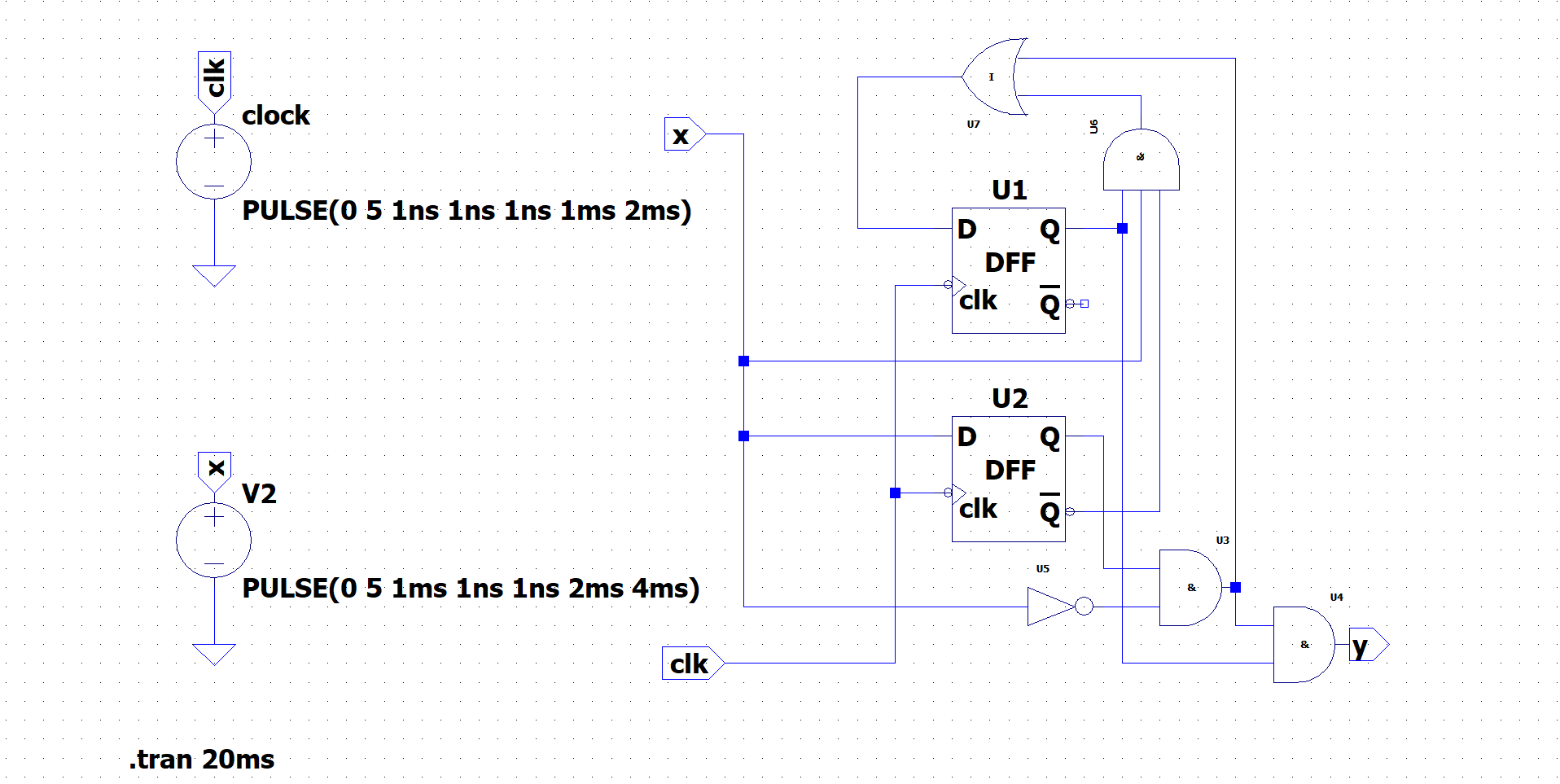This is my first time posting on this board, so I am a little unfamiliar with what I am supposed to put in my question. The sequence I have to detect is 1010... including the overlaps. I am using LTspice to simulate the circuit and am primarily interested in proving that the circuit works by means of the waveform plot.
The schematic for the design I came up with is as follows:
x is the input signal which is 1010....
The waveforms that I get look like this :

(green = clock, blue = input signal (1010...) and red = output)
which I am confused about because the output shows spikes , whereas I am expecting a sustained square
pulses for 1 complete clock cycle. But the spikes appear at the right places (when the input sequence has completed 1010)
In summary, I have two questions
- Am I setting the voltage sources to the correct values for the purposes of this demonstration ?
- If yes, then why am I getting spikes instead of a square pulse till the next clock edge ?
I will admit that I have a very basic working knowledge of LTspice so if I am doing something wrong I am more than happy to learn thanks! Following is the netlist:
XU1 N002 clk N004 NC_01 D_FF
XU2 x clk N005 N006 D_FF
XU6 N004 x N006 N003 AND_3
XU7 N003 N001 N002 OR_2
XU4 N001 N004 y AND_2
XU3 N005 N007 N001 AND_2
XU5 x N007 INV_1
V§clock clk 0 PULSE(0 5 1ns 1ns 1ns 1ms 2ms)
V2 x 0 PULSE(0 5 1ms 1ns 1ns 2ms 4ms)
.tran 20ms
.lib DigitalLogic.lib
.backanno
.end



(Bx')is so I could reuse that value. \$\endgroup\$xand it seems to be working. I havent yet read about race conditions so I am unaware of how exactly this works but I will be keeping this in mind in the future thanks! \$\endgroup\$